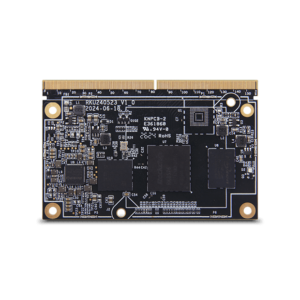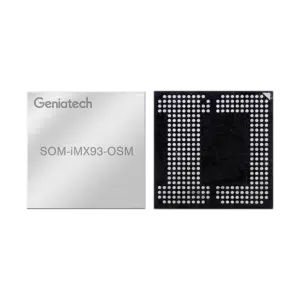Why System on Module (SoM) is the Future of Compact Computing Solutions
Why System on Module (SoM) is the Future of Compact Computing Solutions
Blog Article
The quick development of engineering has pushed significant improvements in stuck systems, certainly one of which is the computer on module Acting as a bridge between custom electronics and off-the-shelf adventures, the SoM is redefining how developers method stuck process design. That blog features the essential understanding of a System on Element and their rising purposes in various industries.

What is a System on Module (SoM)?
A Process on Component (SoM) is really a lightweight, ready-to-use panel that combines all of the key aspects of something on a single module. This on average involves the processor, storage, power administration models, and sometimes additional peripherals like Wi-Fi or Ethernet. Unlike a conventional single-board computer, an SoM doesn't come with fittings and interface ports pre-installed, indicating it must be coupled with a service board to create a complete system.
Built to improve progress workflows, the modular character of an SoM enables designers to skip the elaborate process of designing and assembling every individual portion from scratch. By adopting an SoM, organizations can focus more on the application-specific features of these products.
Advantages of Applying Process on Component
The integration of an entire process on a singular module gift suggestions a few benefits. First, it dramatically reduces the full time necessary for item development. Pre-tested adventures ensure balance, saving months of work for executive teams.
Moreover, the scalability of an SoM allows corporations to regulate performance degrees centered on challenge requirements. Like, a low-cost option can easily range right into a high-end solution by sharing the processor in the component while keeping the company board design. This approach reduces executive risks while marketing long-term cost-efficiency.
Last but most certainly not least, the stability of an off-the-shelf element guarantees high compatibility with current resources and frameworks, making it perfect for equally small startups and large enterprises trying to to enter the market quickly.
Key Applications of SoM in Embedded Methods
The usage of Program on Adventures spans a few high-demand industries including however, not limited by medical devices, automation, and consumer electronics.
Medical Devices
Accuracy and reliability are paramount in healthcare. Program on Modules with protected processing features are stuck in monitors, imaging products, and portable diagnostic tools.
Professional Automation
Strong and energy-efficient, an SoM is a must for professional control systems and autonomous robotics. Their scalable structure helps high-speed knowledge running and IoT connectivity.
IoT Devices

Client products and services like intelligent thermostats, wearable products, and also house assistants incorporate an ultra-compact Program on Element for smooth performance.
The Process on Module remains to gain traction because of its paid off complexity and usefulness, cementing it self as a future-proof option in the embedded methods sphere. Industry leaders are already leveraging these segments, and their range is anticipated to grow further as technology evolves.
Report this page